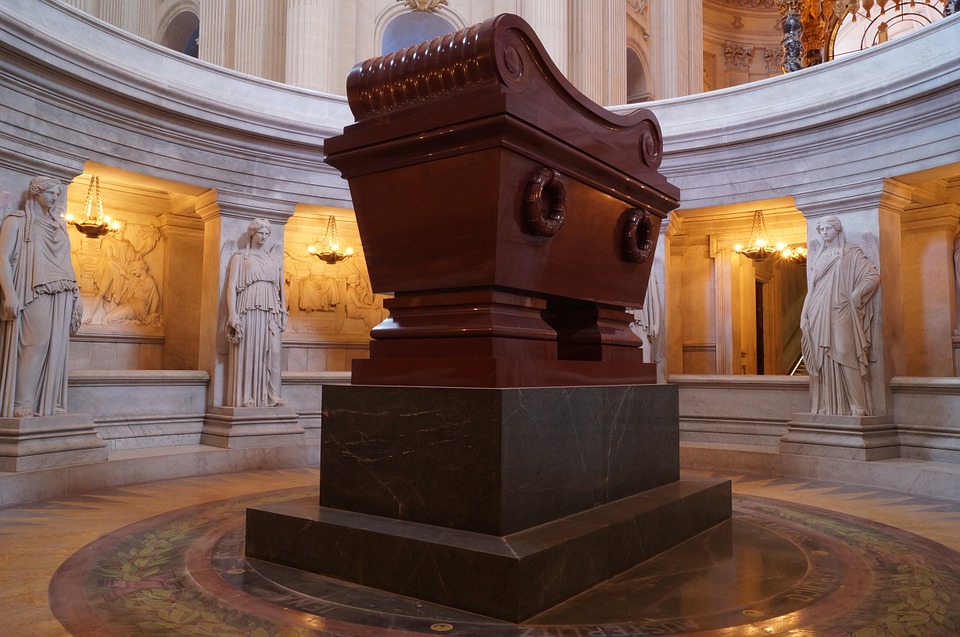Mausoleum

|
| This model represents the Mausoleum at Halicarnassus (near modern-day Bodrum, Turkey). The original structure was destroyed by several earthquakes during the 12th to the 15th centuries. Photo by Jona Lendering, Wikimedia Commons. |
Contents |
[edit] Introduction
A mausoleum is a building containing a stately type of tomb or a room for a tomb. The structure, typically made from stone, is freestanding and acts as an above ground burial chamber for the remains of one person or several people.
In English, the plural, mausoleums and mausolea, are both used.
[edit] History
The term mausoleum originated with the tomb of Mausolus at Halicarnassus, which was considered by Antipater of Sidon as one of the Seven Wonders of the Ancient World. This structure was built between 353 and 350 BC for Mausolus and his spouse, Artemisia (who was also his sister). Artemisia ordered the construction of the shrine for her husband and was interred in the mausoleum with him when she died.
Up until the widespread adoption of Christianity, large mausoleums were constructed for important people or leaders while smaller structures were used by the upper classes. After the rise of Christianity, this method of burial fell out of fashion for hundreds of years, but mausoleums became popular again in early modern times.
In areas susceptible to flooding, such as the American city of New Orleans, Louisiana, the above ground configuration of a mausoleum is considered a more practical burial option. Since it is possible to stack graves within a mausoleum, they are sometimes used in densely populated areas where available land is limited.
[edit] Modern mausoleums
A mausoleum encloses a burial chamber either wholly above ground or within a burial vault below the superstructure. Within the mausoleum is a crypt, which serves as both a memorial to the deceased and a container for the person’s remains.
There are several types of mausoleums
- Public mausoleums for multiple individuals (sometimes hundreds).
- Private (or custom) mausoleums exclusively for families.
- Garden mausoleums situated outdoors.
- Sarcophagus mausoleums which are partially above ground and partially below.
- Vestibule mausoleums designed to look like small houses.
Famous examples of mausoleums include:
Taj Mahal at Agra, India
Pantheon, Rome in Italy
Les Invalides in France
[edit] Related articles on Designing Buildings
Featured articles and news
Homes England creates largest housing-led site in the North
Successful, 34 hectare land acquisition with the residential allocation now completed.
Scottish apprenticeship training proposals
General support although better accountability and transparency is sought.
The history of building regulations
A story of belated action in response to crisis.
Moisture, fire safety and emerging trends in living walls
How wet is your wall?
Current policy explained and newly published consultation by the UK and Welsh Governments.
British architecture 1919–39. Book review.
Conservation of listed prefabs in Moseley.
Energy industry calls for urgent reform.
Heritage staff wellbeing at work survey.
A five minute introduction.
50th Golden anniversary ECA Edmundson apprentice award
Showcasing the very best electrotechnical and engineering services for half a century.
Welsh government consults on HRBs and reg changes
Seeking feedback on a new regulatory regime and a broad range of issues.
CIOB Client Guide (2nd edition) March 2025
Free download covering statutory dutyholder roles under the Building Safety Act and much more.
Minister quizzed, as responsibility transfers to MHCLG and BSR publishes new building control guidance.
UK environmental regulations reform 2025
Amid wider new approaches to ensure regulators and regulation support growth.
BSRIA Statutory Compliance Inspection Checklist
BG80/2025 now significantly updated to include requirements related to important changes in legislation.

























